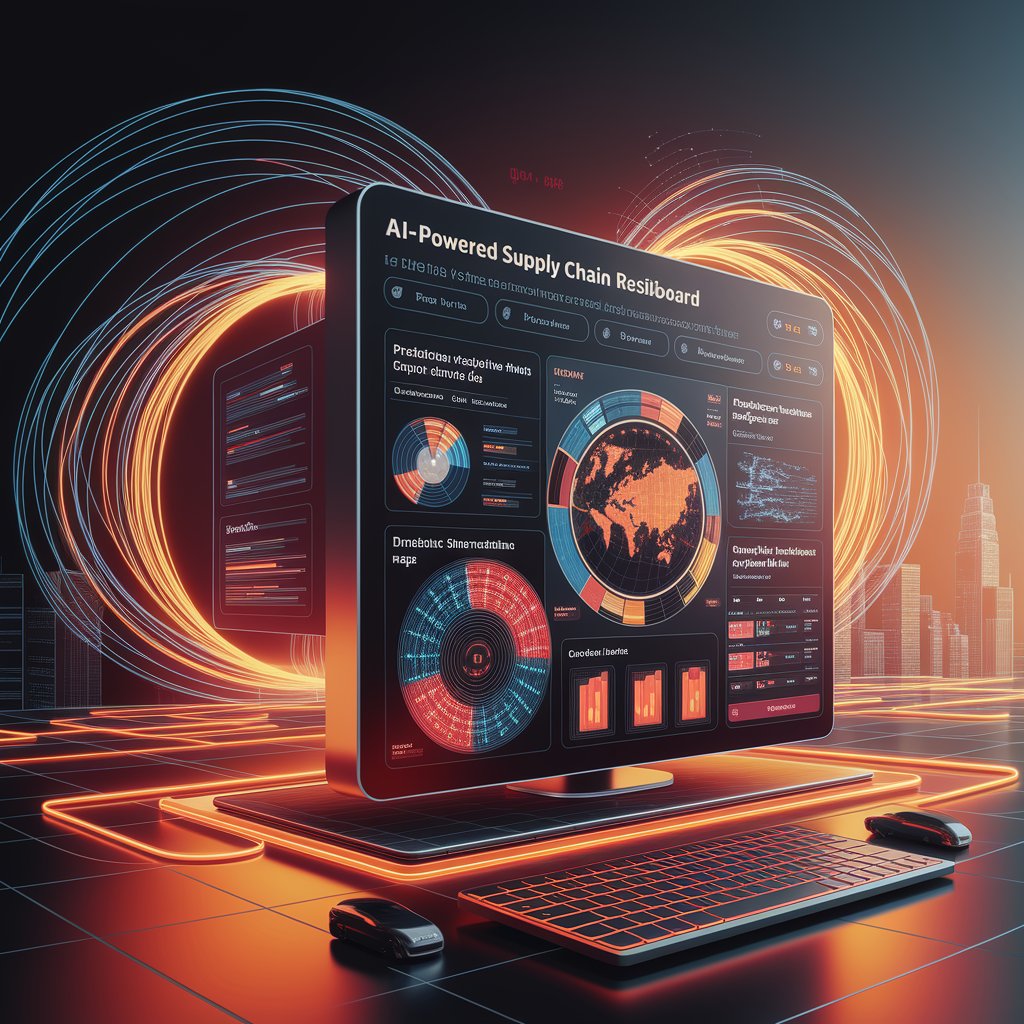AI-Powered Supply Chain Resilience: Building Smarter, Adaptive Logistics

Introduction
That’s why companies are turning to AI-powered supply chain resilience. By leveraging artificial intelligence, predictive analytics, and real-time data, businesses can anticipate disruptions, respond faster, and build adaptive supply chains that thrive in uncertainty.
What Is AI-Powered Supply Chain Resilience?
AI-powered supply chain resilience is the use of artificial intelligence to strengthen supply chains by predicting risks, simulating disruptions, and enabling faster recovery. Unlike conventional systems that react after a disruption, AI resilience tools provide early warnings and automated response strategies.
This approach transforms supply chains from fragile networks into adaptive ecosystems capable of absorbing shocks and sustaining performance.

Key Features of AI-Powered Supply Chain Resilience
- Predictive Risk Monitoring – AI tracks global events (weather, strikes, conflicts) in real time.
- Disruption Simulation – “What-if” models test resilience against various scenarios.
- Dynamic Rerouting – Suggests alternative transport routes instantly.
- Supplier Risk Scoring – Evaluates partner reliability and compliance.
- Automated Alerts & Recommendations – AI-driven corrective actions.
- Integrated Dashboards – Centralized visibility across logistics, procurement, and inventory.
Benefits of AI-Powered Supply Chain Resilience 📈
- Reduced Risk Exposure – Anticipate disruptions before they escalate.
- Faster Recovery – Shorten downtime during major supply chain shocks.
- Lower Costs – Avoid emergency shipments, penalties, and waste.
- Improved Customer Trust – Deliver consistency even in volatile markets.
- Agility & Flexibility – Rapidly adapt to changing conditions.
- Sustainability – Optimize resource allocation while reducing waste.

Real-World Applications
- Freight Forwarders – Provide predictive disruption insights to clients.
- Carriers – Adjust fleet operations proactively during congestion or weather delays.
- Retail & E-commerce – Maintain service reliability during peak demand.
- Cold Chain Logistics – Protect perishable goods with predictive monitoring.
- Global Manufacturers – Anticipate supplier failures and adjust procurement strategies.
Challenges in AI-Powered Supply Chain Resilience
- Data Fragmentation – Multiple partners using disconnected systems.
- Integration Costs – Linking AI with ERP, TMS, and WMS can be expensive.
- Cybersecurity Risks – Sensitive trade and risk data require strong protection.
- Over-Reliance on AI – Human expertise remains essential for validation.
- Change Management – Teams may hesitate to adopt predictive-driven resilience models.

Best Practices for Success
- Focus on High-Risk Trade Lanes – Apply resilience tools where volatility is highest.
- Unify Data Sources – Integrate ERP, IoT, TMS, and supplier data.
- Simulate Regularly – Test supply chain resilience with ongoing “what-if” scenarios.
- Combine AI with Human Oversight – Use planners to refine AI-driven actions.
- Train Teams Across Functions – Build confidence in predictive systems.
- Track ROI in Risk Reduction – Measure avoided costs and improved recovery times.
The Future of AI-Powered Supply Chain Resilience 🚀
- Digital Twins of Supply Chains – Real-time simulations of entire networks.
- Blockchain Integration – Secure, transparent, and tamper-proof risk data.
- Autonomous Resilience Systems – AI automatically managing disruptions.
- Collaborative AI Ecosystems – Shared predictive insights across shippers, carriers, and regulators.
- Green Resilience Models – Balancing risk reduction with sustainability goals.
Conclusion
AI-powered supply chain resilience is no longer optional—it’s the new standard for logistics leaders. With predictive monitoring, disruption simulations, and real-time rerouting, companies can turn uncertainty into opportunity.
For freight forwarders, shippers, and carriers, investing in is more than a defensive strategy—it’s the foundation of future-ready, adaptive supply chains.
